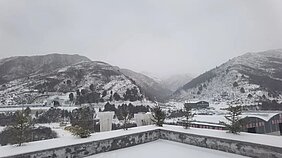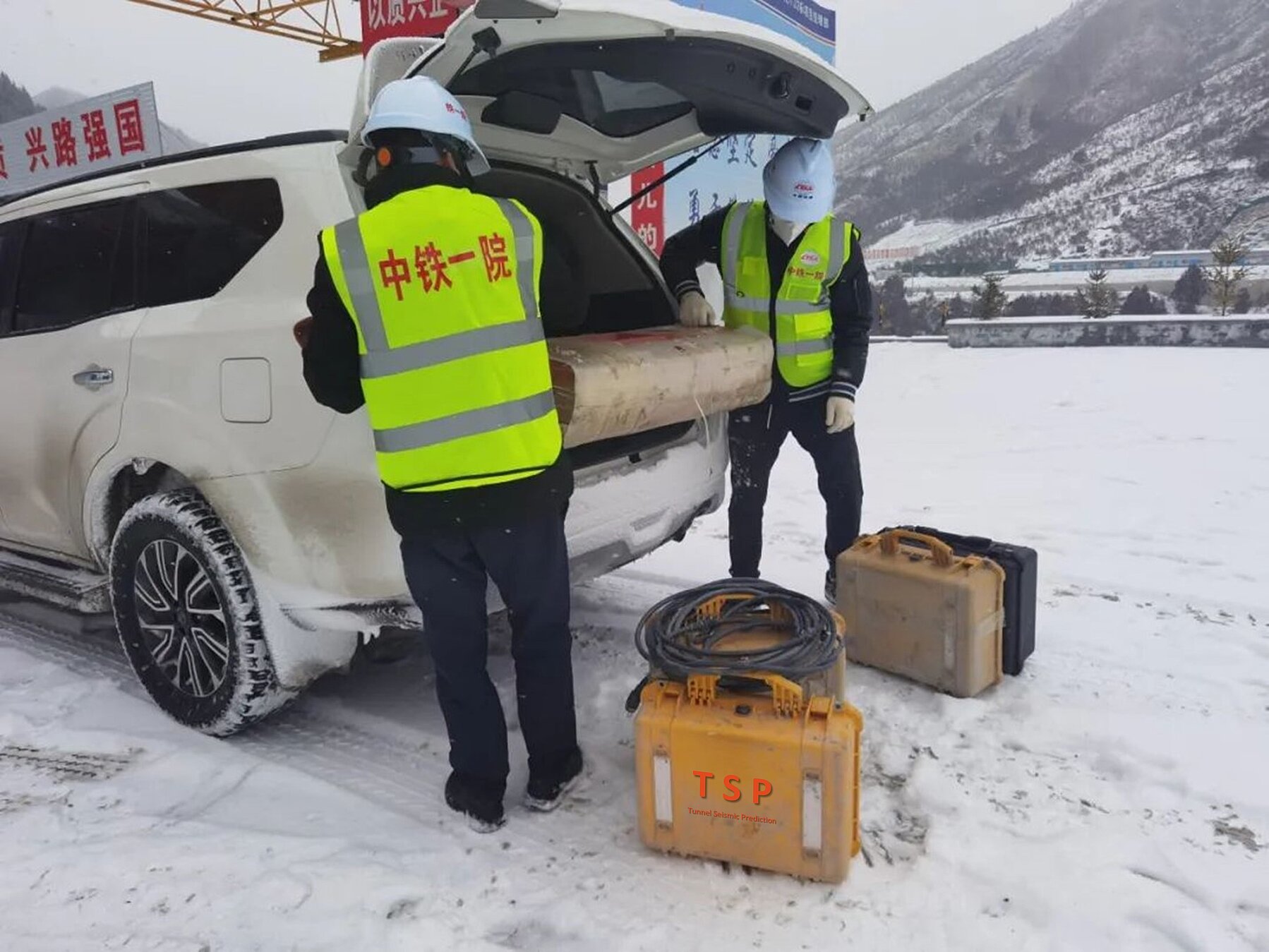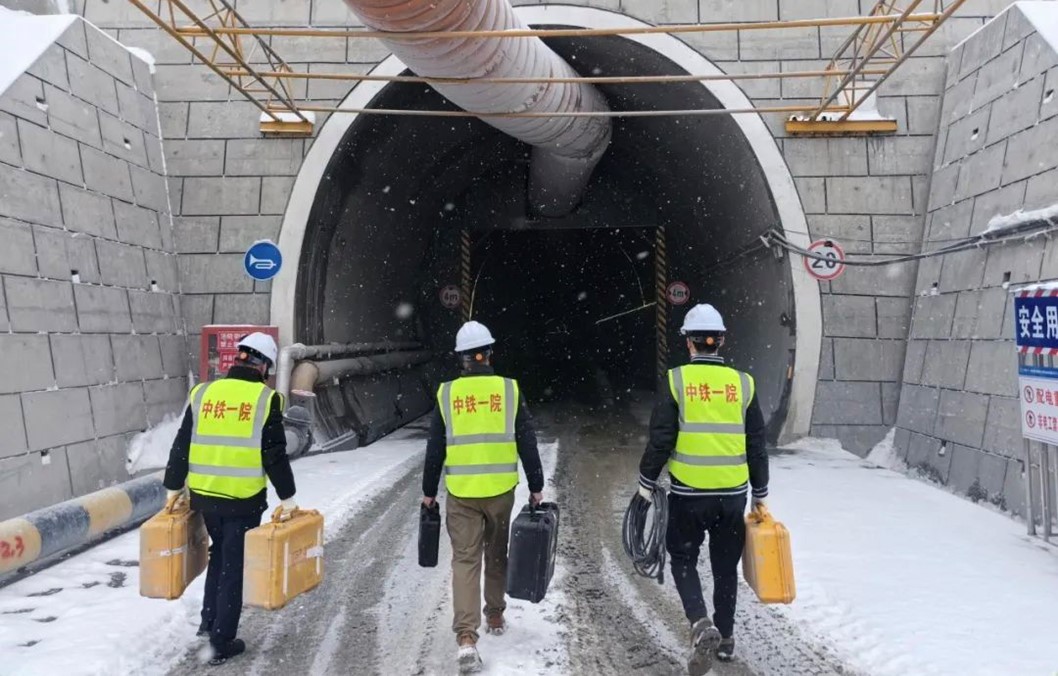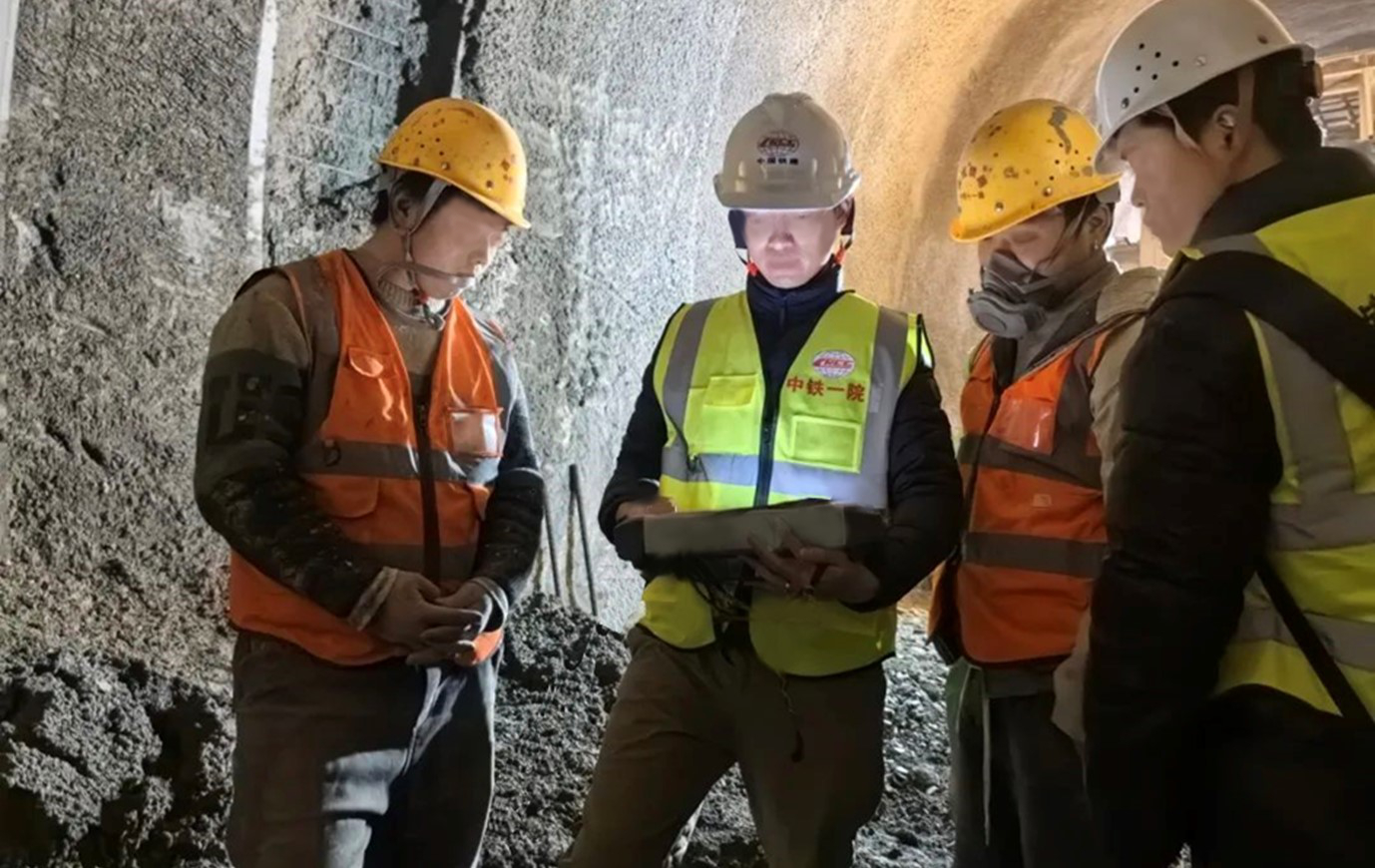TSP on Dragon Year's Eve duty
By Yang Shaoqi, China Railway First Survey and Design Institute Group Co., Ltd.
Compiled by Thomas Dickmann, Amberg Technologies AG
Approaching the Lunar New Year of the Dragon, many people have embarked on their journey home, but at an altitude of 3,500 metres on the Sichuan-Qingdao Railway (Gansu section) construction site, a lot of tunnel builders are still deep in work. In mid-winter, the geological advance exploration team from the China Railway First Survey and Design Institute is also escorting the construction site to ensure safe tunnel excavation.
It is a waxing moon, the climate is getting colder and colder, the day is not yet bright. A group of three people from a residency in Gansu Province drive 90 kilometres to reach the tunnel site. In accordance with the requirements of the design programme, they will carry out ground investigations near the face of the Sichuan-Qingdao railway tunnel. Outside the car window it is -19 degrees Celsius, snowflakes are falling, and grass and trees lie withered at the end of the mountain range. They vaguely hear the long howl of wolves from the plateau.
“In tunnelling, we often encounter fracture zones, sudden mud and water floods and other emergencies that threaten the safety of construction. We therefore use TSP geological forecasting technology to analyse the data and identify these risk factors.”, introduces the team leader to the others. "Our technology can not only effectively avoid the occurrence of disasters in the construction, but also reduce loss of progress rates due to unexpected rock mass conditions.”
After nearly two hours of driving, the team arrived at the entrance of the Zeche Tunnel and unloaded the boxes of instruments from the car, "Doing our line of work is often called 'tunnel doctor' by the workers, just like the doctor who does medical check-ups. Beside the TSP equipment, we also use a geological compass and a rebound meter". He introduced the equipment of the advance geological forecast as a treasure. "This TSP 603 system is the most advanced equipment in the international arena, which can realise wireless transmission of signals, and greatly enhance the efficiency of our on-site operations."
In the tunnel light, loaders, excavators, slurry machines and other machinery and equipment work in an orderly way. It is hot and dry here. "We use these methods to carry out exploration, in this 10.48-kilometre-long Zeche Tunnel as it has complex stratigraphy, tectonic development, strong karst phenomena, high stress conditions, and it is passing through nine regional faults. It has extremely complex geological conditions and is a high-risk tunnel for the whole line."
As soon as they arrived at the tunnel face, the team members start the operation. While using a geological compass and a tape to measure the surrounding lithology, structural features and drip seepage, a comprehensive evaluation of the current tunnel face surrounding is carried out assessing the rock classification as accurately as possible. This is to possibly adjust the excavation method and support measures.
"According to the results of the geological mapping, the current classification of the surrounding rock is correct, and construction can continue according to the current excavation method and support measures. However, the condition of the surrounding rock ahead of the tunnel face needs to be further determined by the elastic wave reflection method. We need to ensure an effective overlap with the previous one in order to make the geological forecast continuous, timely and efficient." While installing the instruments, construction personnel take care of the shot holes, detonator installation and other blast preparations.
"Tunnel Seismic Prediction – TSP is a forecasting method that uses the propagation characteristics of seismic waves in the rock ahead to reveal the condition of the surrounding rock and adverse geology. And seismic waves have to be generated by the blasting of explosives, so we have to install detonators for the blasting." At 10:20am, the first shot is blown, followed by an immediate presentation of the recorded seismic waveforms on the TSP tablet. "These waveforms represent the reflection paths and speeds of seismic waves from different geological rock formations ahead”, Mr. Li states and points to the screen of the tablet.
After the subsequent blasts have been fired in 23 further shot holes, the TSP data acquisition in the tunnel is complete.
Out of the tunnel, the landscape is completely covered in snow. Mr Li says: "The quality of the field data is the basis of all our forecasting work. After the return to our residence, we will do numerical modelling of inversion, and analyse and interpret the adverse geological condition lying ahead of the face. With this, we can create a risk alert report for the next tunnelling section to go." In the vast snow of Gannan Plateau, the team continued to move towards the next tunnel construction site of this new and long railway line.






